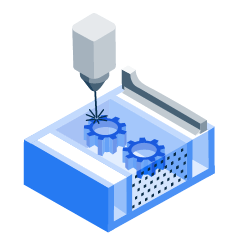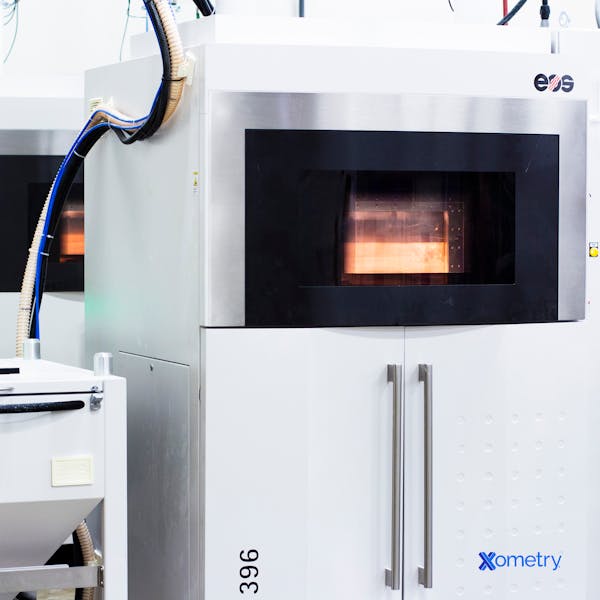Video: How Does Selective Laser Sintering (SLS) 3D Printing Work?
Selective laser sintering (SLS) is one of the most popular 3D printing technologies; it excels at creating highly accurate and durable parts. But how does the SLS process work? Watch this video to find out!

Selective laser sintering(SLS) is a laser powder bed fusion process that uses a high-power laser to center small particles of polymer powder, primarily nylon. A thin layer of the powder is distributed on top of the build platform from a supply container. The build chamber and bed plate are heated to just below the plastics melting temperature. This makes it easier for the laser to solidify the part.
The laser directs its beam to the scanner system, which consists of a mirror control by a galvo-motor system. The beam traces out the first layer of the past cross-section and heats the powder to the material's melting point; the particles are then sintered together. The build platform moves down by one layer into the build chamber, typically about 200 microns.
The process repeats until the parts are complete. During printing, the unmelted powder supports the solidified parts, which eliminates the need for dedicated support structures. Once the printing process is complete, the build chamber needs to cool down to ensure optimal mechanical properties and prevent the warping of the parts. The finished parts are separated from the build chamber, and any excess powder is cleaned off them. SLS printed come out grainy; if necessary, they can be post-processed using vapor smoothing and media tumbling.

Why You Should Order SLS 3D Printed Parts With Xometry
Xometry can always help you find the ideal supplier for your specific SLS needs. Our wide network of vetted machine shops contains a wide range of dedicated quick turn SLS partners with a variety of high-quality finishing and material capabilities and many types of sintering systems. Finishing options available include color dyeing, sanding, painting, and plating to meet your needs. From low-volume prototyping to high-volume production, Xometry can always help you source the parts you need on time and at a competitive price from the U.S. machine shops best suited to the job.
Learn more about SLS 3D printing by downloading our free SLS 3D Printing Design Guide. And, when you are ready to build your next big idea, head to the Xometry Instant Quoting Engine® to get an instant quote for high-quality 3d printed parts.

